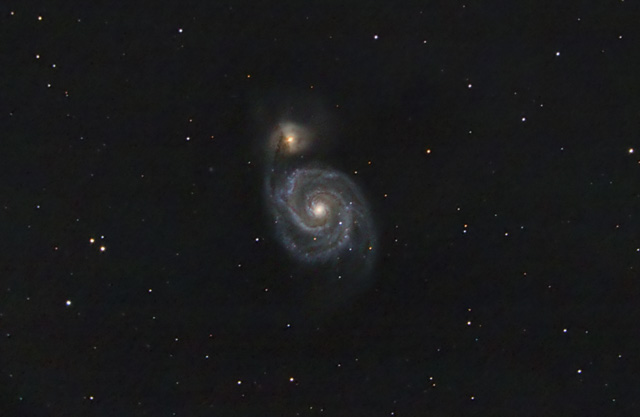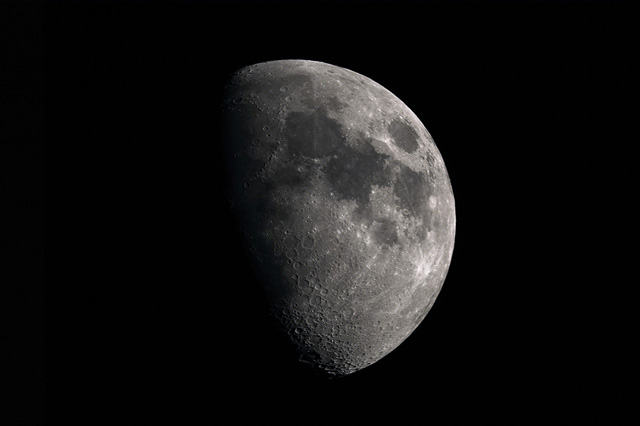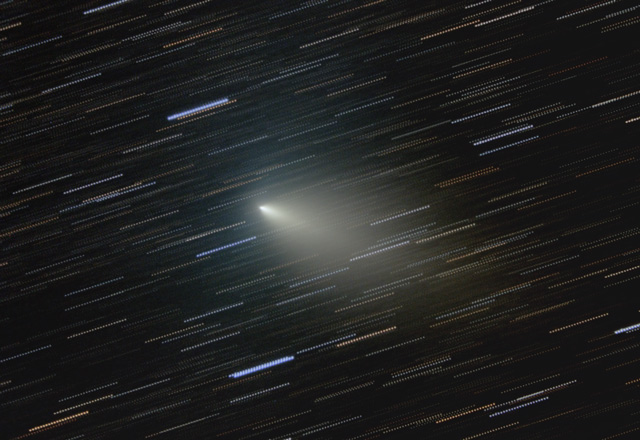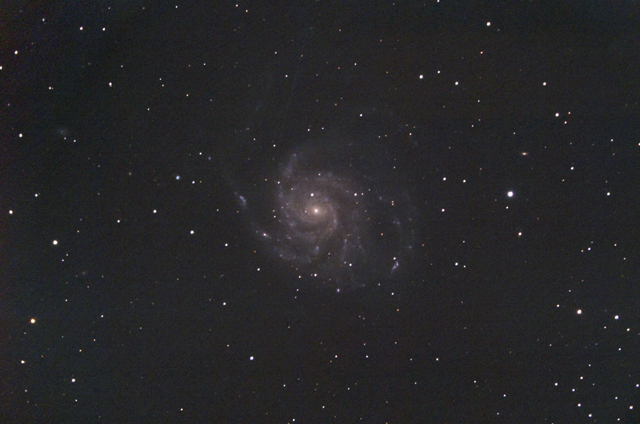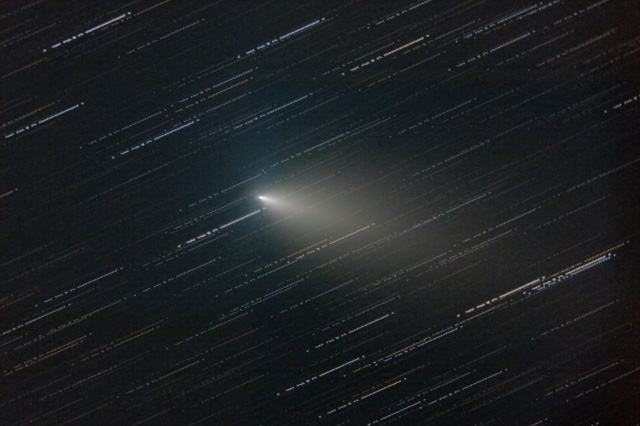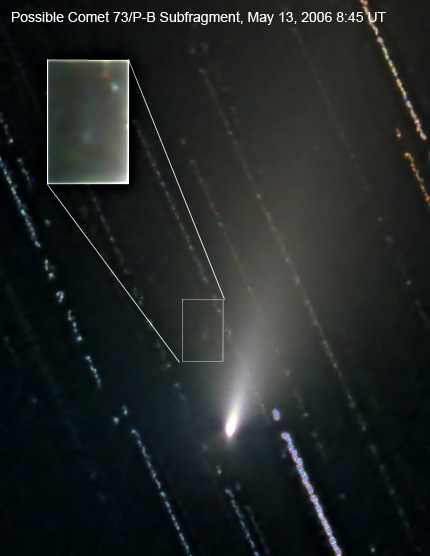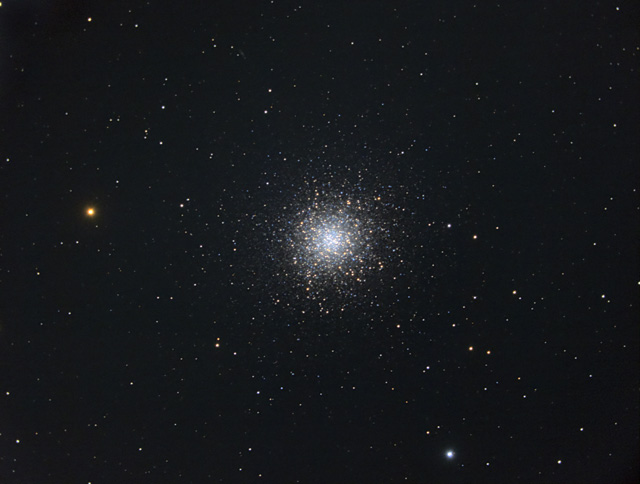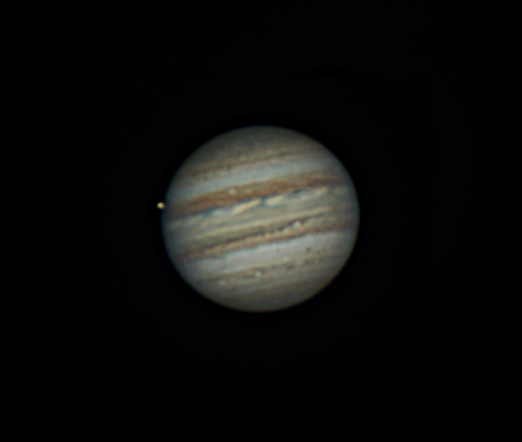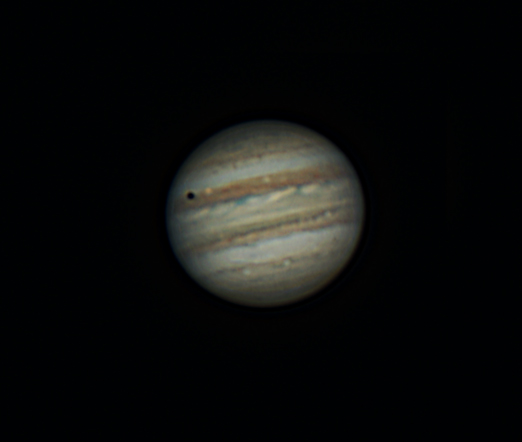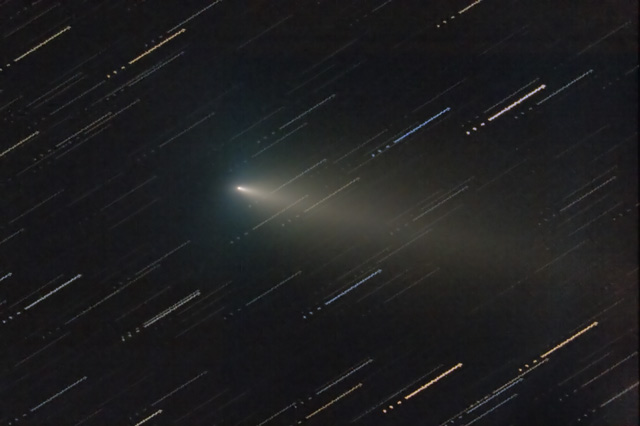______________________
Comet 73P-B/Schwassmann-Wachmann
|
The amateur astronomy community is in observing heaven with a comet in the sky that is in several pieces and visible in small telescopes, binoculars and even the naked eye! 73P/Schawassmann-Wachmann and all of it's components are near their best right now and for little while longer this May. I imaged the "B" fragment on the morning of May 4th, 2006 with my C-8 telescope. I was clouded out about the time the comet was getting into position to shoot on the night before. I set my alarm clock to wake up at 3:00 AM. My plan was to get a close-up and then a wide-angle shot with my 200mm F/2.8 telephoto lens before sunrise. On this morning, the "B" fragment was passing close to a one of the better globular clusters in the sky, M13. Well, I got the close-up, but I was clouded out again before I could shoot a wide-angle set of images that would have captured the comet passing the globular cluster. Darn! Anyway, I was able to "freeze" the stars and comet for the image below, even though the comet is moving at a good pace in the sky. You can click here to see the "trailed" version of the image. I did the "star-freeze" image by stacking the sub-frames in certain ways so that neither the stars or the comet trailed. Check it out: |
|
Comet 73P/Schwassmann-Wachmann, component B on 5/4/06, 09:00 UT. Taken with a Celestron C-8 at F/6.3 (1260mm.) Guided with a Meade DSI and 100mm F/5 refractor. Camera is a Hutech Type 1 modified Canon 350 XT. Exposure was 19x60 second sub-images at 800 ISO. Processed and stacked in IRIS with dark, flat and bias calibration. Photoshop, RC-Astro's Gradient XTerminator and Noel Carboni's Astronomy Tools for post processing. Neat Image for noise reduction. This image was aligned on the comet's head and median stacked/ Then, the alignment and stacking was done on the stars after removing the comet from each sub. The resulting two images were combined to produce the image above. Click here to see the full size hi-res version. |

